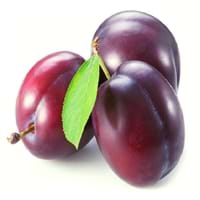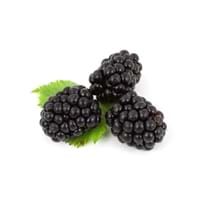Health Benefits
Cancer prevention, Cures gastro-intestinal troubles, Heart care, Increase in haemoglobin, Prevents diabetes
Cancer prevention, Heart care, Increases metabolic rate, Reduces stress, Treatment of dysentary, Treatment of skin Diseases
General Benefits
Anti-inflammatory properties, Boosts immune system, Digestive aid, Eye care, Flu treatment, Helps in weight loss, Maintains healthy cholesterol level, Treatment of common cold
Digestive aid, Maintains healthy cholesterol level, Strengthens bones
Skin Benefits
Anti-aging benefits, Brightens and lightens complexion, Reduces wrinkles, Skin revitalization, Treatment of dark spots
Hydrates skin, Skin rejuvenation, Skin revitalization
Hair Benefits
Prevents hair loss, Promotes longer and healthier hair, Protects hair, Remedy for split ends, Treatment of dandruff
Promotes longer and healthier hair
Allergy Symptoms
Abdominal pains, Anaphylaxis, Vomiting
Facial muscle tension, Pressure in sinus, Respiratory congestion, Runny nose, Sneezing, Tingling sensation in wrist and face
Side Effects
Allergic reaction
Nausea, Vomiting, Might cause change of urine color
Best Time to Eat
As a snack in the late afternoon, Eat the fresh ones, avoid mixing with any other foods, don't eat after meal., Morning time (before lunch)
Best if taken as a breakfast (or empty stomach), As a snack in the late afternoon, Don't consume at night and before bed, Eat the fresh ones, avoid mixing with any other foods, don't eat after meal., Morning time (before lunch)
Vitamin B5 (Pantothenic Acid)
Vitamin C (Ascorbic Acid)
Vitamin K (Phyllochinone)
Phytosterol
Not Available
Calories in Fresh Fruit with Peel
Calories in Fresh Fruit without Peel
Not Available
Not Available
Calories in Pie
Not Available
Season
Summer
Spring, Summer
Varieties
Victoria, President, Czar, Ariel, Avalon and Oullins Gage
Prime Ark, Prime Jim, Illini Hardy, Kiowa, Shawnee, Apache, Arapaho, Chester, Hull, Natchez, Navaho and Triple Crown and Von
Color
Pink, Purple, Red
Purplish black
Inside Color
Yellow
Magenta
Taste
Juicy, Sweet, Tart
Juicy, Sweet
Origin
Caucasus
Asia, Europe, North America, South America
Soil Type
Clay, Loam, Sandy loam
Well-drained
Climatic Conditions
Cold
Dry, Warm to hot climate
Facts about
- In china, plums are used for production of wine.
- A chemical called amygdalin found in plum seeds, turns into toxic compound in human body.
- Plum tree produces fruit 3-5 yrs after planting.
- There are around 2000 varieties of blackberries throughout the world.
- 80-85 degrees is the ideal temperature for its production.
- Leaves of blackberry tree are used to treat sore throats and mild inflammation of the gums.
Top Producer
China
United States of America
Other Countries
Bosnia, Chile, India, Iran, Italy, Romania, Serbia, Turkey, United States of America
China, New Zealand, Serbia, South Africa
Top Importer
United Kingdom
United States of America
Top Exporter
Chile
Mexico
Botanical Name
Prunus domestica
Rubus Fruticosus
Synonym
Not Available
Rubus Millspaughii or Rubus Laciniatus
Subkingdom
Tracheobionta
Tracheobionta
Division
Magnoliophyta
Magnoliophyta
Class
Magnoliopsida
Magnoliopsida
Species
P. domestica
Rubus fruticosus
Difference Between Plum and Blackberry
We might think that Plum and Blackberry are similar with respect to nutritional value and health benefits. But the nutrient content of both fruits is different. Plum and Blackberry Facts such as their taste, shape, color, and size are also distinct. The difference between Plum and Blackberry is explained here.
The amount of calories in 100 gm of fresh Plum and Blackberry with peel is 46.00 kcal and 43.00 kcal and the amount of calories without peel is Not Available and Not Available respectively. Thus, Plum and Blackberry belong to Low Calorie Fruits and Low Calorie Fruits category.These fruits might or might not differ with respect to their scientific classification. The order of Plum and Blackberry is Rosales and Rosales respectively. Plum belongs to Rosaceae family and Blackberry belongs to Rosaceae family. Plum belongs to Prunus genus of P. domestica species and Blackberry belongs to Rubus genus of Rubus fruticosus species. Beings plants, both fruits belong to Plantae Kingdom.









